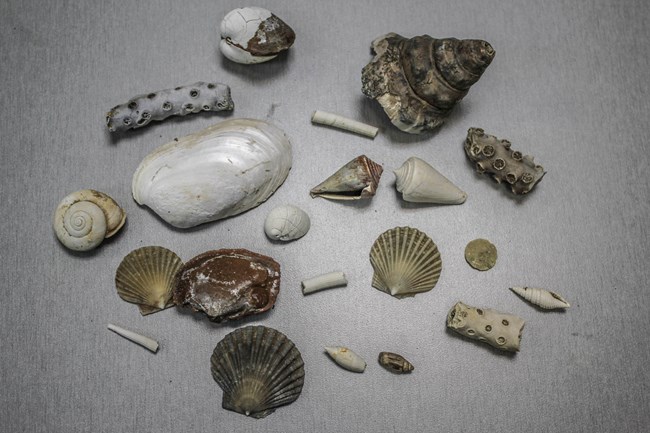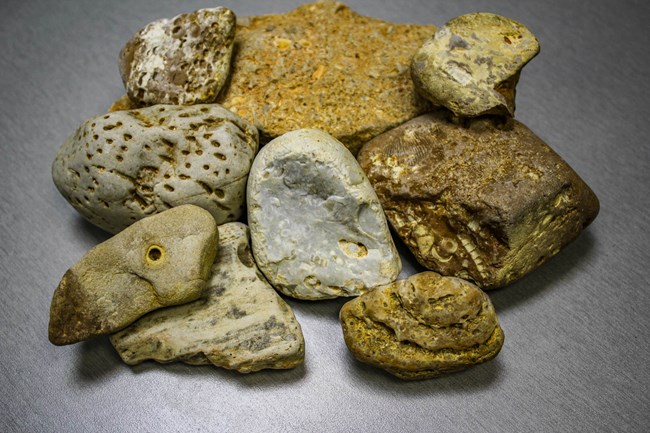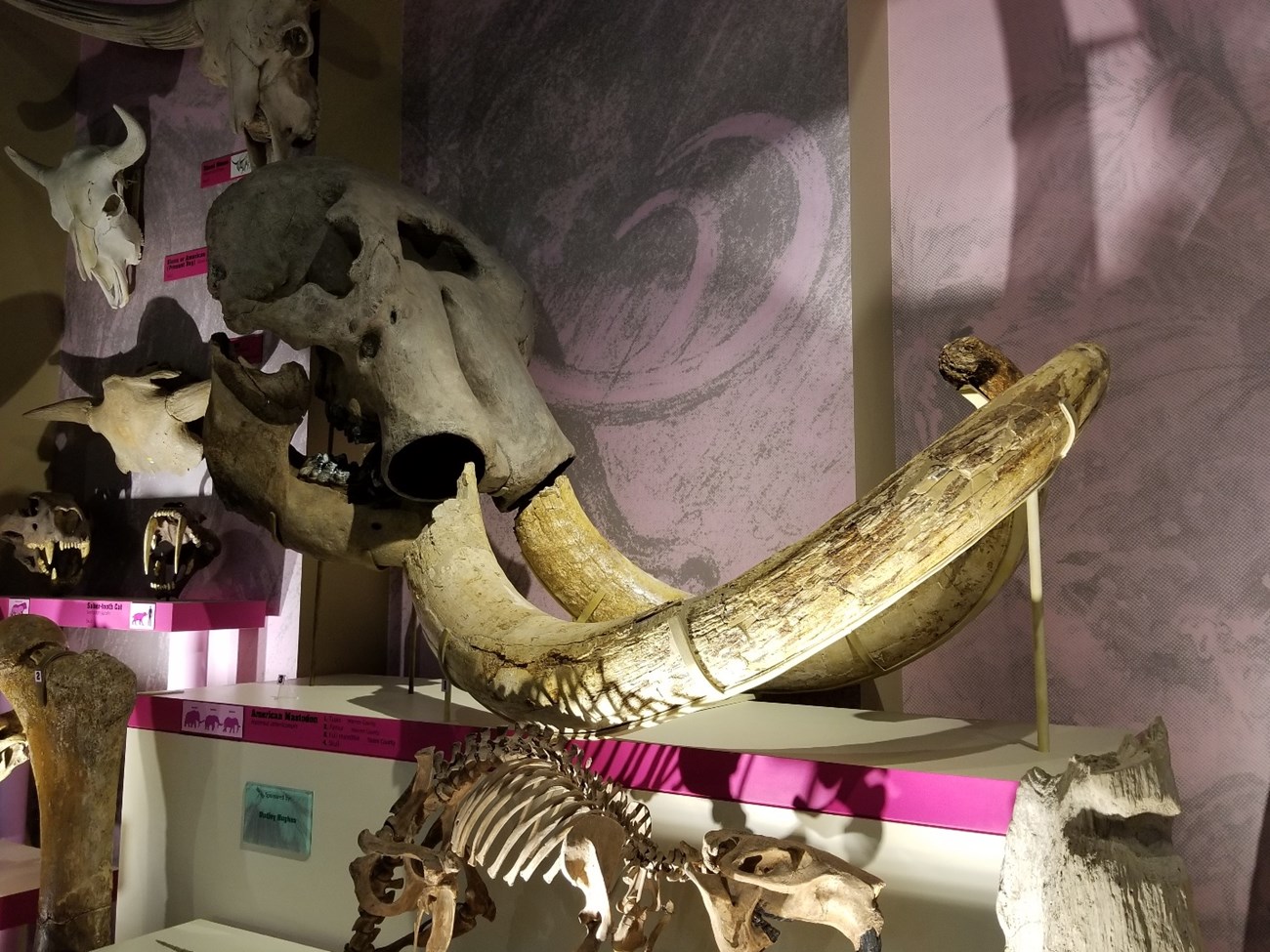|
The past is a puzzle and fossils are some of the many pieces used to solve it. Fossils can tell you many things, including what the ancient environment, or paleoclimate, was like when they were alive, how much oxygen and other elements were present, behavior of the organism and even how past plants and animals are related to modern ones. Fossils can be plants, such as petrified wood or a leaf imprint, or they can be animals. Animal fossils are categorized into two categories: invertebrates and vertebrates. Invertebrates are animals without backbones. Much of the time invertebrate fossils have hard bodies or shells that preserve well. Vertebrate fossils are animals with backbones. These include fish, birds, mammals, reptiles and amphibians. Reminder: Fossils are protected within the Military Park. Fossil hunting is prohibited and punishible by law.

Types of Fossils
Invertebrate Fossils The invertebrate fossils found in the Vicksburg Group are some of the best preserved Oligocene fossils in the world. These fossils consist primarily of hard-bodied sea creatures. Some of these shells are still in their original state, consisting of aragonite rich shells, and have not been significantly altered. This has allowed scientists to do extensive testing on these fossils that would not have been possible had they been altered over time. Some of the invertebrate fossils in the park include corals, cephalopods, gastropods, bivalves, brachiopods and foraminifera. 
Vertebrate Fossils In addition to the many well-preserved shells and other sea life preserved in the bedrock, the loess soils above these rocks contain a unique and important paleontological resource. While none have been found in the park at this point in time, several significant vertebrate fossils have been found close to the park boundary. These include fossils of large creatures like mastodons and giant ground sloths among other Pleistocene creatures. The proximity of these finds indicates a large possibility that the loess of the park may hold more of these significant fossil discoveries. You can see some of theses fossils at the Mississippi Museum of Natural Science in Jackson. What to Do if You Find a Fossil in the Park?Fossils provide valuable information about what past life was like in the park. Because of this, it is important to leave fossils where you find them. Take a picture of your fossil find and share it with a ranger. Remember, not only does taking fossils take away from telling the geologic history of the park it is also illegal. 
|
Last updated: February 26, 2018
